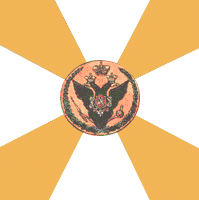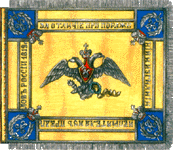Following the conversation here
viewtopic.php?f=5&t=14697 with this post I start to provide info on how Cossacks are depicted in the H&R setting.
But before speaking about specifics one needs to know and understand the “general case”. Detailed explanation may be found in the Main H&R document
https://web.archive.org/web/20130228140 ... 20Main.pdf (pages 3-9). Putting it short:
1. A basic unit for the cavalry is “effective squadron”. Basic formation is a regiment, consisting of a leader (regimental commander) and several effective squadrons. Regiments are organized into brigades and so forth.
2. Size of effective squadron depends on the cavalry type:
140-150 men in Heavy cavalry
130-140 men in Dragoons
110-130 men in all sorts of the Light cavalry – Hussars, Uhlans, Chasseurs, Chevauxlegers etc.
90-100 Irregulars including Cossacks
3. Cavalry stacking is limited not by a stacking limit, which is equal to 300 riders, but by the number of cavalry units in a hex – 2 . Hence it’s different for different types of cavalry. Moreover it decreases with cavalry units suffering casualties.
4. Depending on the quality of regiment units have different nominal quality=morale rating, which, depending on regiment quality, may be B or C for regular cavalry. Moreover all the cavalry units have default fatigue level set to 525. Units fatigue may not be decreased during daytime. Hence effective morale would be C-D or worse, as the units gain fatigue.
5. All the regimental commanders have extra tight command range of 1 hex. Depending on regiment quality regimental commander may have Command rating of D or E. All the regimental commanders have Leadership rating equal to F.
6. HOUSE RULE. Light and irregular cavalry may break down into half squadrons. Dragoons and Heavies may not.
As a result the cavalry has “consumers qualities" as follows:
1. Cavalry charge factor and melee modifiers are set in such a proportion that single fresh charging dragoons squadron would defeat single fresh nonsquared battalion in approximately 50% of cases. For Heavies this probability is higher for lights – lower, for irregulars – negligible.
2. The word fresh in the above sentence is crucial. The effectiveness of cavalry charge very much depends on the number of men charging. Extensive playtesting showed that in a “battle environment” charges have a fair chance to succeed if they are conducted by divisions – i.e. stacks of two squadrons. Otherwise defensive fire from arty and/or target may cause so high casualties that conducting a melee would turn out unprofitable.
3. Playtesting showed that stack of two cavalry squadrons charging at a single battalion would most probably suffer 30-40 men casualties. This number is stable regardless of the type of cavalry, it’s state, etc. Two squadrons – is the only thing that matters. Plus one needs to add probable casualties from defensive fire. The casualties count for defender very much depend on the number of attackers. Two fresh heavy squadrons would chop them into pieces, two mauled chasseurs would cause the same 30-40 men.
4. Hence cavalry can conduct only a few charges vs. infantry before it completely loses its battle value. This number is 2-3 for lights and up to 5 for elite heavies.
5. If attacking frontally Heavies have an advantage over the lights. On the other hand Light cavalry with the same number of men can occupy a longer (with breaking down into halfsquadrons – much longer) front, hence it may use flanking and/or isolation advantages.
6. Leaders play a crucial role. Once melee has taken place the most important task is to reorder your units. With low leaders quality probability of undisorder for units within the command range may be as low as 35%. Maintaining solid command chain allows to increase it to 50-60%. Moreover the command range is extra tight, hence only a few units in real melee could be attempted to undisorder.
7. Rally probability for routed units may be improved only by divisional or higher commanders.
_________________


Leib-Guard Cuirassiers Regiment's
General-Fieldmareshal Count Anton Kosyanenko
Commanding Astrakhan grenadiers regiment
2nd Grenadiers Division, Russian Contingent





